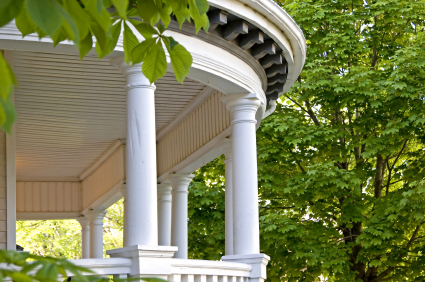
A survey of municipalities across the country revealed that pigeons were the most widespread nuisance. After that, the most bothersome birds were blackbirds, starlings, house sparrows, crows and ravens. Strategies on how to humanely get rid of birds can occupy many a property owner.
Not surprisingly, the biggest problem caused by the number one nuisance bird (pigeons) is the volume of droppings they create. These deposits are not only smelly, but slippery, unsightly and a health hazard, carrying diseases like salmonellosis, ornithosis, cryptococcus, and histoplasmosis. Equally troublesome is the acidic composition of their droppings, which erodes metal and even stonework. To get rid of pigeons calls for some professional solutions that go beyond water hoses and firecrackers.
Grackles, blackbirds and starlings often invade cities in vast migratory and winter flocks. Seeking warmth and shelter, they form noisy, smelly roosts on city buildings and trees. The roosts often serve as breeding grounds for histoplasmosis. What’s more, bird droppings can destroy the vegetation under the roosts. Grackles, in particular, can quickly ruin backyard fruit crops. House sparrows can pollute patios, swimming pools, and the air entering outside air conditioners, allowing ectoparasites to enter homes and offices. To get rid of small birds like these without injuring them can be a challenge.
If you’ve been inundated by pest birds, consider implementing some humane, professionally recommended pest bird deterrents, including:
Site Specific Scarecrows
Highly effective in getting rid of birds from specific areas, the Scarecrow is a motion-activated sprinkler that shoots a harmless but persuasive blast of water at any bird or birds. Scarecrows connect to any standard garden hose and will guard a 1,200-square-foot area (or a 35-foot by 45-foot wide swath). A Scarecrow’s motion-activated sensitivity and water spray radius can be easily adjusted to fit the application.
No-Perch, No Roost Bird Spikes
Designed to prevent larger birds like pigeons and crows from landing on roofs, patio covers and other elevated areas, Bird Spikes are harmless to birds, people and pets. Available in rigid unbreakable polycarbonate (plastic) or durable stainless steel, bird spikes are easy to install. They are ideal for getting rid of birds on rooftop AC units, skylights, and solar panels.
Distract and Deter with Balloons and Diverters
Used together with the two deterrents listed above, Visual Bird Deterrents can be placed in any elevated, high visibility area to get rid of birds. Choose Reflective Bird Diverters or Predator Eye Balloons. Diverters consist of tear-drop shaped panels covered with a big predator eye to intimidate birds. You hang these in various lengths and space them 2 to 3 feet apart. Predator Eye Balloons resemble beach-balls and are covered with large predator eyes. The best visual deterrents will be made of weather-resistant vinyl plastic. For best results, it’s best to alternate the location of these deterrents since most birds are smart and will eventually get used to them as non-threatening.






